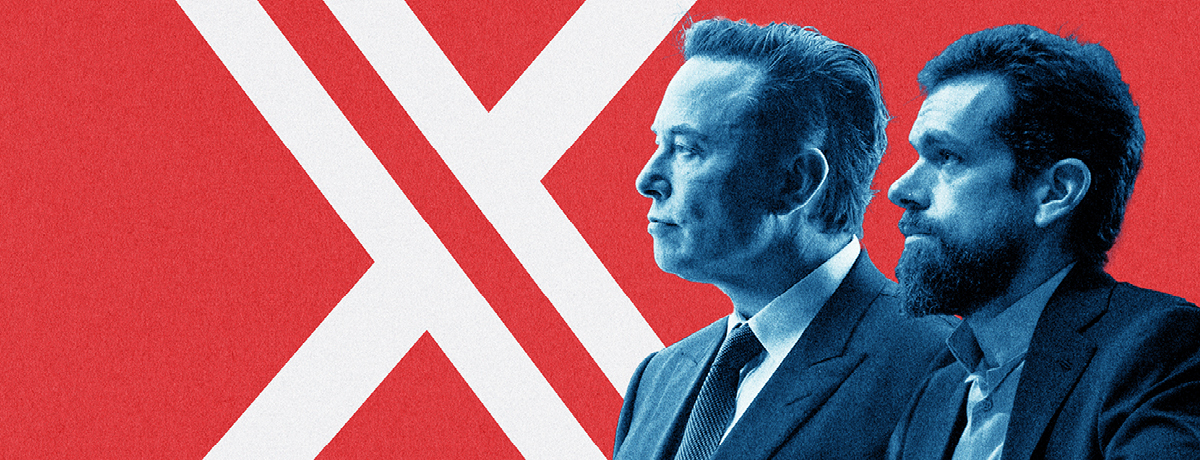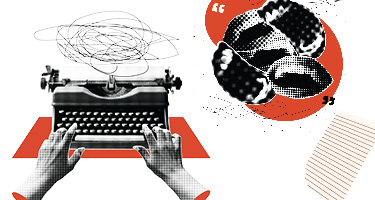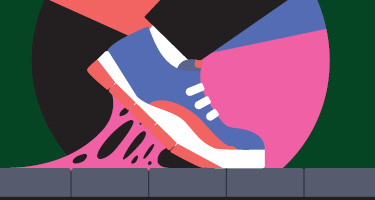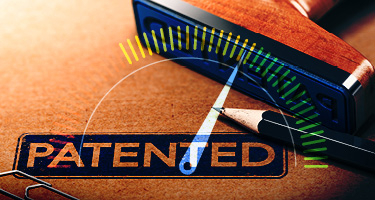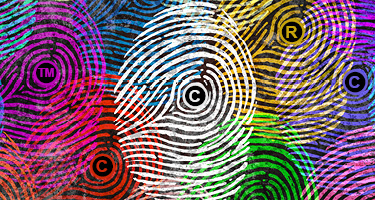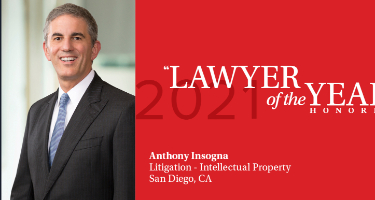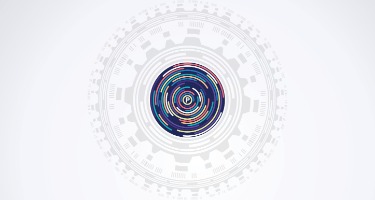“Delete all IP law.”
That was the four-word declaration Jack Dorsey posted on X—blunt, unqualified, and unmistakable. Elon Musk, the platform’s owner and longtime critic of intellectual property protections, responded in agreement. Between them, the two men hold stakes in some of the world’s most powerful companies. They’ve shaped industries, influenced regulation, and disrupted entire markets. Their alignment on this issue is neither accidental nor irrelevant.
“A conversation that in another context, in another time, could have just been seen as casual conversation or irrelevant or interesting and part of the public debate, now inspires realistic regulation and fears about whether it might become policy in a week’s time,” says Oxford AI ethicist Carissa Veliz. What might once have passed as online provocation now warrants serious attention.
This isn’t just a debate over how to compensate creators. It’s a direct challenge to the legal infrastructure that underpins everything from patents and trademarks to creative authorship. As the legal, tech, and creative communities grapple with the implications of AI, the Dorsey-Musk provocation forces a reckoning with what intellectual property law protects and who stands to benefit from its potential collapse.
Why Abolish IP Law?
Jack Dorsey’s statement may have been brief, but his reasoning behind it is anything but shallow. In follow-up comments, he argued that the current intellectual property system extracts too much from creators while returning too little. According to Dorsey, today's IP laws function less as tools to protect innovation and more as mechanisms for rent-seeking—capturing value for intermediaries rather than the creators themselves. In his view, the system doesn’t just fail to reward creativity fairly; it actively restricts it.
Dorsey insists that much greater models exist to pay creators—though he’s offered little detail on what those alternatives might look like. His core premise is that current IP law doesn’t scale well for a digital economy shaped by decentralization, rapid content generation, and open-source collaboration. Instead of promoting innovation, it limits it by locking creative output behind legal barriers that benefit platforms and rights-holders more than originators. Dorsey has shown an interest in open source approaches, notably initiating the project which eventually became Bluesky, though he later became disillusioned and left its board.
Support for this position has come from others in the tech community. Chris Messina, an early social media innovator, framed current IP enforcement as a new kind of punitive tool. He likened automated IP fines and three-strike rules to the outdated criminal penalties once used to target marginalized groups, suggesting that enforcement regimes risk replicating structural inequities in a digital context.
Elon Musk’s endorsement of Dorsey’s stance is consistent with his long-standing skepticism of IP protections. Years ago, Musk told Jay Leno that “patents are for the weak,” casting them as defensive weapons for companies without real innovation. In 2014, he announced that Tesla would not enforce its electric vehicle patents against companies using them in good faith—a move framed as altruistic and forward-thinking.
Yet even that gesture had limits. When Tesla sued Australian company Cap-XX in 2023 for alleged patent violations, the company defended its actions as a necessary response to prior litigation, highlighting how even open IP strategies are ultimately contingent on competitive interests.
For both Dorsey and Musk, abolishing IP law aligns with their broader efforts to rewire economic models in ways that reduce friction and remove legal constraints. Whether this is principled or opportunistic remains open to interpretation.
The AI Angle
The timing of Dorsey and Musk’s anti-IP declarations is no coincidence. Their statements emerged just as AI companies face mounting legal scrutiny over how they source training data—most notably, copyrighted material scraped without consent.
Rather than waiting for the courts to decide, many of the companies embroiled in high-profile lawsuits have turned to lawmakers. OpenAI and Google are aggressively lobbying for changes to U.S. copyright law that would reframe how AI training is regulated, including pushing for a 10-year moratorium on any regulations.
At the center of their effort is an expansive interpretation of the fair use doctrine. They argue that using copyrighted works to train AI models should be legally permissible, characterizing it as a transformative process that benefits society. In OpenAI’s case, the company has framed unrestricted access to training data as a matter of national security, positioning its models as essential tools in the geopolitical AI race.
Within this broader legal and regulatory battle, the statements from Musk, Dorsey, and even OpenAI CEO Sam Altman can be seen as ideological markers. They reflect a shared belief among leading tech entrepreneurs that current copyright law is incompatible with the scale and pace of AI development. For them, existing protections are not just outdated—they’re obstacles.
Whether through abolition, reinterpretation, or policy capture, the goal is to rewrite the legal landscape in a way that secures unrestricted access to the raw material of human creativity. When asked whether a clearly derivative AI-generated cartoon constituted IP theft, OpenAI CEO Sam Altman sidestepped the question entirely, underscoring how little clarity creators can expect in this evolving landscape.
Why IP Law is Essential
U.S. intellectual property law is constitutionally enshrined to promote the progress of science and the arts. Its purpose is structural, ensuring that creators and inventors have the exclusive right to benefit from their work for a defined period. Eliminating that protection potentially destabilizes current licensing agreements, invalidates thousands of existing contracts, and erodes the legal basis for litigation involving infringement, misappropriation, or unauthorized use.
For industries like publishing, entertainment, software, and biotech, this is existential. These sectors are built on IP-backed revenue models, protections that underpin everything from global licensing deals to startup valuations. Without enforceable IP, derivative products could flood the market with no legal recourse, devaluing original works and cutting off return on investment.
AI further complicates this landscape. If synthetic content can be produced at scale using protected works, and IP law no longer governs that use, the distinction between original and derivative content vanishes. This raises not just ethical questions, but also financial and operational ones for clients who rely on predictable rights frameworks to build, license, and protect their products.
Adding to the criticism is a recurring charge of hypocrisy. Dorsey, whose fortune was built on platforms that benefited from intellectual property protections, now advocates their abolition.
The contradiction is not lost on observers, who see the move not as idealistic reform, but as a convenient pivot from someone whose businesses are now oriented around content dissemination and decentralized networks rather than content creation. Writer Lincoln Michel offered sharp criticism, writing on Bluesky that “none of Jack or Elon’s companies would exist without IP law,” adding that these two men “just hate artists.”
Implications for the Legal Industry
For lawyers, the central challenge isn’t whether IP law should be abolished—it’s preparing for what happens if its scope narrows or enforcement weakens. Courts are being asked to apply 20th-century statutes to tools that remix millions of protected works in milliseconds. Policymakers are entertaining frameworks that could reduce IP to a default opt-out or impose blanket licensing on creators. The result is an increasingly unstable foundation for clients whose business models depend on controlling their content.
What this demands from the legal profession is not just reaction—but retooling.
Client advisement must now include a digital chain-of-title analysis: where content originated, whether the training data behind AI systems included protected material, and what liabilities may follow from use or redistribution. Standard indemnification language is likely insufficient. Licensing terms will need to reflect both upstream and downstream uses of content—especially when outputs can be recombined, repurposed, or mistaken for the original.
Contract drafting will need to anticipate ambiguous ownership. If AI contributes to a work, who holds the rights, and are those rights enforceable at all? Creative assets that were once straightforward to protect may now require layered terms distinguishing human-authored elements from those that emerged through synthetic input.
Litigation strategy must also shift. Infringement suits involving AI will require new evidentiary models. Proving substantial similarity may no longer be enough. Lawyers will need to demonstrate how a system was trained, what it accessed, and whether that access was authorized—often in jurisdictions where those questions remain unresolved.
Precedent is no longer static. Emerging rulings, lobbying efforts, regulatory reinterpretations, and unsolicited comments from billionaires are unfolding faster than traditional continuing education can address. Firms that serve clients in affected industries must build rapid-response frameworks to adapt strategy in real time.
Creators and legacy institutions are being forced into a reactive posture, often relying on litigation or public advocacy to push back. The legal profession plays a critical role in that balance—advising clients on risk exposure, helping craft new licensing frameworks, participating in amicus advocacy, and contributing to policy development.
What’s clear is that the status quo will not hold. Whether the future brings expanded rights, weakened protections, or something in between, the need for informed, principled engagement has never been greater. Legal professionals will not just interpret the new boundaries of IP law—they’ll help draw them. In an environment this volatile, their ability to navigate uncertainty and guide meaningful reform will shape the legal landscape for decades to come.

